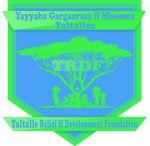Bride Provider
The task is designed to develop and implement an inexpensive, results-based approach to save, enhance and restore habitats in lowland intensive farmland without unduly impacting agricultural manufacturing.
The next certain goals will be perused:
-Develop, implement and assess revolutionary choices to restore, protect and enhance farmland habitats.
-Improve interaction and dissemination in regards to the contribution of Irish farmland towards the preservation of biodiversity.
-Facilitate the development of a demand that is market-based the agri-food industry for method of getting ecosystem services from farmers.
The task aims to create and implement an economical, results-based approach to conserve, enhance and restore habitats in lowland intensive farmland without unduly impacting production that is agricultural.
The next particular goals will be perused:
-Develop, implement and assess revolutionary choices to restore, protect and enhance farmland habitats.
-Improve interaction and dissemination in regards to the share of Irish farmland towards the preservation of biodiversity.
-Facilitate the creation of a market-based need by the agri-food industry for method of getting ecosystem services from farmers.
Project tasks include:
Creating a Biodiversity Management Arrange (BMP) in assessment with participating farmers that identifies priority actions for the maintenance/enhancement of farmland wildlife. Farm-based actions will target farmland habitats such as for example: hedgerow management, industry margins, retention of wintertime stubble on cereal farms, skylark plots, riparian buffer strips, creation of the permanent pond, preservation of current farm habitats latin women brides, indigenous woodlands, nest-box and bat-box installation, rodent control and control of invasive types.
Monitoring the diversity of vegetation kinds, flowers, bird, bats and pollinators, making use of set up a baseline and surveys that are ongoing.
Project tasks include:
Making a Biodiversity Management Arrange (BMP) in assessment with participating farmers that identifies priority actions for the maintenance/enhancement of farmland wildlife. Farm-based actions will target farmland habitats such as for instance: hedgerow management, industry margins, retention of cold weather stubble on cereal farms, skylark plots, riparian buffer strips, development of the permanent pond, preservation of current farm habitats, indigenous woodlands, nest-box and bat-box installation, rodent control and control of invasive species.
Monitoring the diversity of vegetation kinds, flowers, bird, bats and pollinators, utilizing set up a baseline and surveys that are ongoing.
Many intensively managed farmland throughout Ireland has already established participation that is relatively low in agri-environment schemes (and linked wildlife choices). Nonetheless, it really is this farmland this is certainly most regularly represented in Quality Assurance and Sustainability Schemes, and it is almost certainly to require a customised intend to keep and enhance farmland wildlife habitats. Also, re payments for actions alone usually do not constantly guarantee that habitat quality is delivered within intensive farming systems, necessitating the necessity for a cutting-edge approach that is results-based making sure ecological gains are accomplished, and value-for-money is accomplished. Biodiversity Regeneration In a Dairying Environment (BRIDE) aims to create and implement an approach that is results-based save, enhance and restore habitats in lowland intensive farmland when you look at the River Bride Valley, Co. Cork, which comprises an element of the River Blackwater Special section of Conservation. The BRIDE project will measure the wildlife priorities on fifty participating farms and, in collaboration using the farmers, identify priority actions for wildlife and habitat preservation. The project will suggest actions to enhance wildlife habitats/ species and can assess the effect regarding the actions. Farmer re re payments are going to be based on the degree to which wildlife goals are accomplished; hence, the task will implement results-based repayments. a crucial aim will be to utilize the BRIDE task to display and communicate classes discovered to your agri-food industry. Dissemination tasks will improve nationwide understanding of the choices to keep and enhance biodiversity within intensively handled farmland.
Many intensively managed farmland throughout Ireland has received fairly low involvement prices in agri-environment schemes (and linked wildlife choices). Nonetheless, it’s this farmland that is most often represented in Quality Assurance and Sustainability Schemes, and it is probably to require a plan that is customised keep and enhance farmland wildlife habitats. Moreover, re re payments for actions alone usually do not constantly guarantee that habitat quality is delivered within intensive farming systems, necessitating the necessity for a forward thinking results-based approach in making sure ecological gains are accomplished, and value-for-money is accomplished. Biodiversity Regeneration In a Dairying Environment (BRIDE) aims to develop and implement an approach that is results-based save, enhance and restore habitats in lowland intensive farmland within the River Bride Valley, Co. Cork, which constitutes the main River Blackwater Special section of Conservation. The BRIDE task will measure the wildlife priorities on fifty participating farms and, in collaboration with all the farmers, identify concern actions for habitat and wildlife preservation. The project will suggest actions to enhance wildlife habitats/ species and can assess the impact regarding the actions. Farmer re payments will undoubtedly be on the basis of the degree to which wildlife goals are accomplished; thus, the project will implement payments that are results-based. an aim that is important be to utilize the BRIDE task to display and communicate classes discovered towards the agri-food industry. Dissemination tasks will enhance nationwide knowing of the choices to keep and enhance biodiversity within intensively handled farmland.
